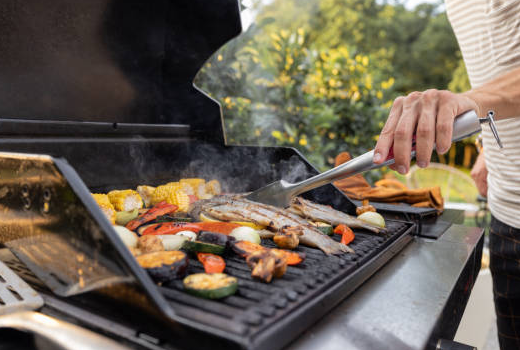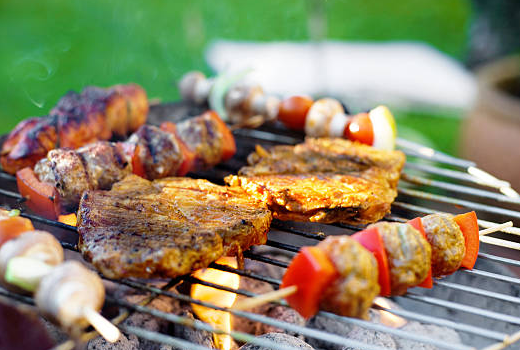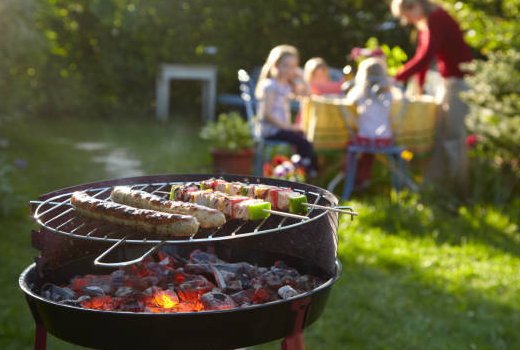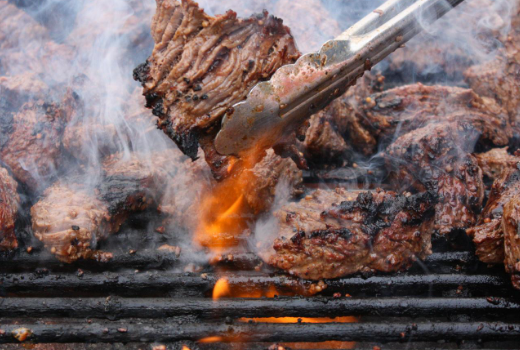How to Safely Light a Gas Grill

Why You Should Regularly Oil Your Wooden Cutting Board
April 23, 2025
Freeze Strawberries to Enjoy Classic Summer Flavor All Year Long
April 28, 2025Gas grills are quick to light, heat up fast, and are easy to clean, which is why they’re the preferred choice for many Americans—half of Americans grill at least once a year. Lighting a charcoal grill takes more time, charcoal, and extra tools like a chimney starter. But with a gas grill, all you need to do is push a button… just remember these safety tips.
Keep reading to learn how to light your gas grill, and within minutes, you’ll be ready to enjoy your next top-tier BBQ meal. Plus, if your gas grill isn’t lighting, we’ll show you how to use a lighter to get it going.
How to Light a Gas Grill
Your grill’s user manual should provide instructions for lighting it, but here’s a general guide that works for most models.
1. Open the Lid
The first and most important step to safely lighting your gas grill is simple: open the lid. If too much gas accumulates inside the grill before lighting, it can lead to an explosion or a flare-up when the grill ignites.
2. Check the Tank
A propane tank typically lasts 12 to 18 hours, depending on the temperature, altitude, and the food you’re cooking. It’s a good idea to have a backup tank on hand in case the one you’re using runs out mid-grill.
3. Turn on the Gas
Open the shutoff valve at the top of the propane tank, then turn the burner knobs on your gas grill to allow gas to flow.

4. Ignite
Press the ignition button and keep holding it down until you hear a “click” or see a flame. If the grill still doesn’t ignite, turn off the gas, check the AA battery in the igniter (it may need replacing), and try again.
5. Wait and Test
Once you hear and see the ignition, wait 20 seconds. Carefully hold your hand about 6 inches above the grill to feel for heat. You should feel it starting to warm up. Ignite all burners used for direct or indirect grilling.
6. Preheat the Grill
Once the grill is lit, close the lid and preheat it for 10 to 15 minutes. When the grill reaches around 500°F (about 244°C), use a long-handled grill brush (one of our top 10 must-have BBQ tools) to clean the grates. Then adjust the burners to the temperature required for your recipe.
Troubleshooting
If the gas grill doesn’t light, keep the lid open and wait a minute to let any remaining gas dissipate before trying these steps again.
Sometimes the igniter might fail. If the igniter isn’t working, consult your grill manual to see if it can be manually lit. Most models come with instructions for lighting your gas grill with a match or lighter. Once you find the best place to light it manually, turn the burner knob to high/low heat. Carefully bring the flame near the burner, and once it ignites, move the match or lighter away gently. Make sure the igniter flame has gone out.
Safety Tips When Lighting a Gas Grill
Most supermarkets, home improvement stores, gas stations, and convenience stores sell propane tanks. Since propane is colorless, it’s hard to tell if something’s wrong. However, you should be able to smell it—it has a scent similar to rotten eggs or skunk spray. Propane tanks may also hiss as gas escapes due to pressure. Use your sense of hearing and smell to stay alert for these signs. Breathing in large amounts of leaked propane gas can increase the risk of fainting, asphyxiation, or even heart failure.
While rare, explosions or fires can still occur if gas leaks come in contact with a spark or heat source. Always store propane tanks and gas grills according to the manufacturer’s instructions, and follow best practices for gas grills as recommended by the Hearth, Patio, and Barbecue Association (HPBA).
Now that you’re equipped with the proper steps and safety precautions, you’ll be ready to light your gas grill safely and start cooking! Enjoy your BBQ experience, knowing you’re doing it right.



